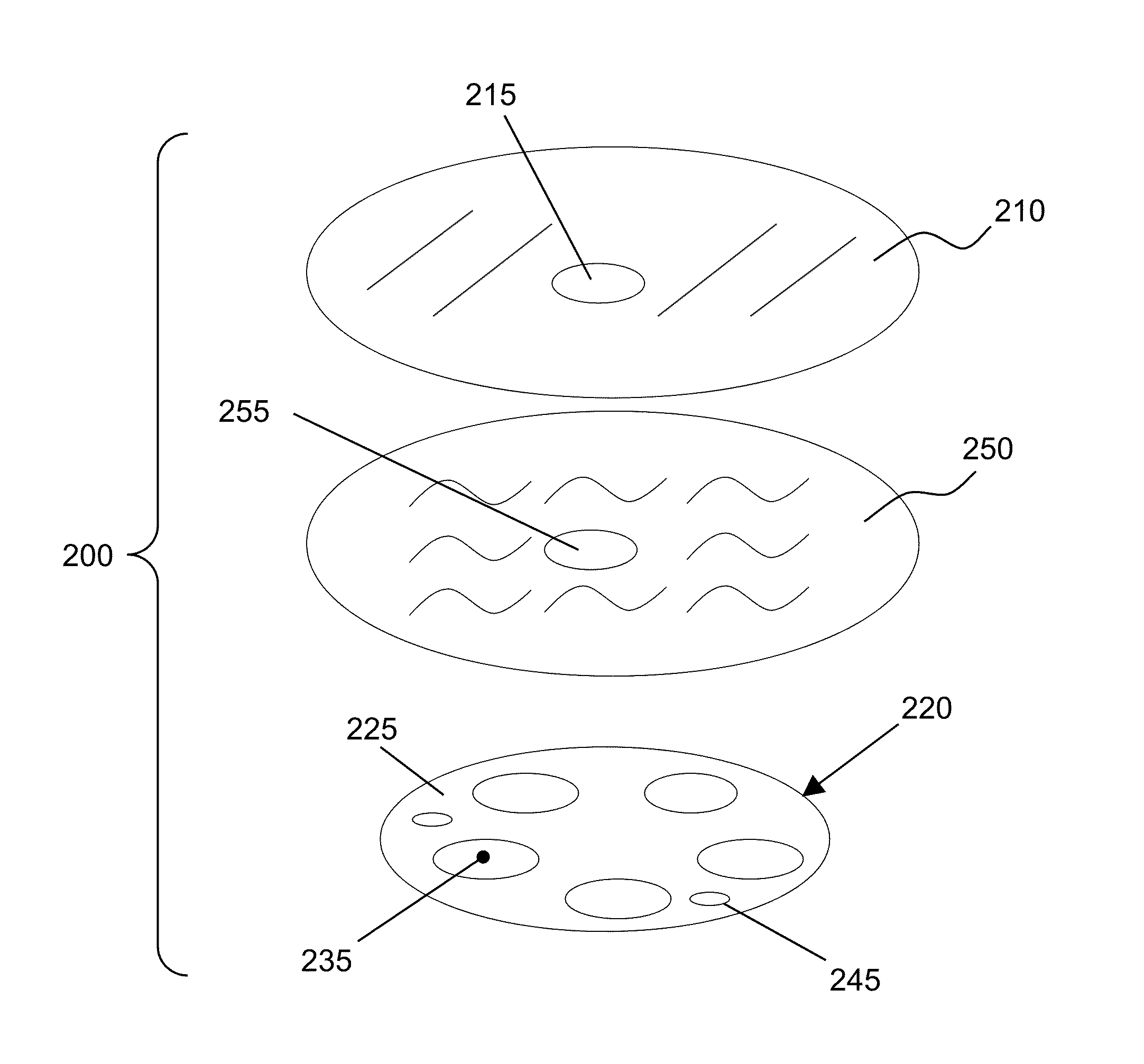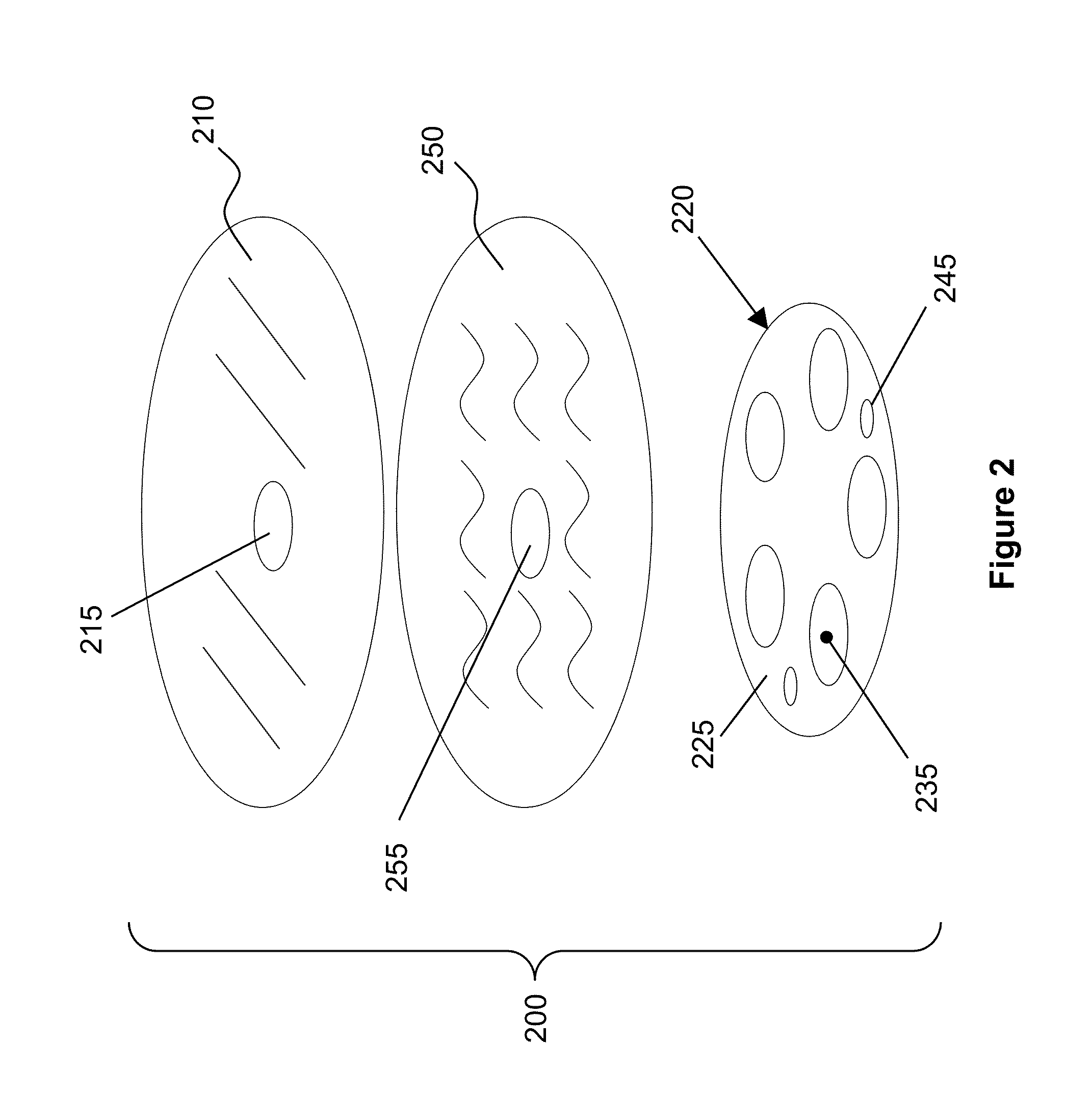Compliant wearable patch capable of measuring electrical signals
a technology of wearable patches and electrical signals, applied in the field of wearable wireless electronic devices, can solve the problems of not providing adequate comfort for users, not staying attached to users' bodies for the required length of time, and conventional wearable devices, and achieve the effect of high compliance and flexibility, and increasing the durability of wearable patches
- Summary
- Abstract
- Description
- Claims
- Application Information
AI Technical Summary
Benefits of technology
Problems solved by technology
Method used
Image
Examples
Embodiment Construction
[0028]Referring to FIG. 1, a compliant wearable patch 100 can be placed on and adheres to a person's skin 110 on his or her body such as forehead, hand, wrist, arm, shoulder, breast, waist, leg, foot, etc.
[0029]As discussed above, there are several challenges for wearable patches on human skin. The patches need to stay on skin for an extended period enduring various daily activities such as taking showers or bathes, swimming, exercises, holding weights, etc. The patches also need to adapt their physical dimension to adhere to the skin, which will change its shape by the muscle movements underneath. The patches are also rubbed by clothing numerous times a day. While it is very challenging to keep Band-Aid stickers to stay on skin for a week, conventional wearable patches normally have much stiffer rigid substrates, which make them more easily rubbed off than Band-Aid stickers. In addition, it is also very challenging to make a tag or a patch to be comfortable to the user. Ideally the...
PUM
 Login to View More
Login to View More Abstract
Description
Claims
Application Information
 Login to View More
Login to View More - R&D
- Intellectual Property
- Life Sciences
- Materials
- Tech Scout
- Unparalleled Data Quality
- Higher Quality Content
- 60% Fewer Hallucinations
Browse by: Latest US Patents, China's latest patents, Technical Efficacy Thesaurus, Application Domain, Technology Topic, Popular Technical Reports.
© 2025 PatSnap. All rights reserved.Legal|Privacy policy|Modern Slavery Act Transparency Statement|Sitemap|About US| Contact US: help@patsnap.com



